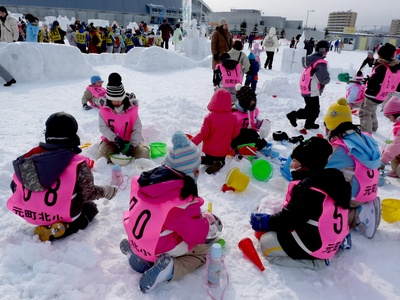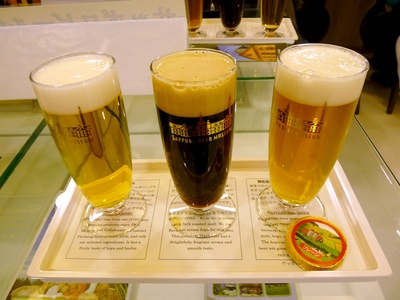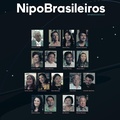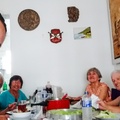Sapporo, capital da província de Hokkaido, é a quinta maior cidade do Japão. Sapporo já foi palco dos Jogos Olímpicos de Inverno em fevereiro de 1972 e ainda organiza eventos internacionais de esportes de inverno. Seus verões são frescos, o que acaba atraindo muitos turistas de outras partes do Japão para curtir suas temperaturas agradáveis, mas seus invernos são muito gelados e rigorosos. No inverno, a região atrai turistas do mundo todo para o seu maior evento anual, o Yuki Matsuri (Festival de Neve), que acontece durante uma semana do início de fevereiro.
No caminho de trem à cidade de Sapporo, a neve acumulada nas ruas chega a surpreender-nos por sua brancura e quantidade. Como não estamos acostumados, após uma caminhada na rua, que em solo seco não nos cansaria, ficamos com as pernas doloridas devido ao maior esforço em cada passo. Além disso, é preciso andar com muito cuidado, pois qualquer distração pode significar um tombo ou belos hematomas. A neve que vai derretendo é bastante escorregadia. Quase caí várias vezes! À noite, os caminhões passam pelas ruas retirando um pouco da neve que dificulta o tráfego.
O Yuki Matsuri é conhecido por suas esculturas de neve gigantes, que apesar de imponentes, parecem frágeis e delicadas. São cerca de 200 esculturas de neve que transformam Sapporo em um museu de neve ao ar livre. Há muitos turistas de diversas nacionalidades que vão assistir o evento, mas vários são chineses e koreanos. O evento também acaba sendo um roteiro de excursão das escolas japonesas. Se as obras impressionam durante o dia, à noite têm a sua beleza ressaltada pelo espetáculo de luzes coloridas que iluminam as esculturas. Shows de cantores – famosos ou não – tentam animar as noites frias e a programação do Festival.
A tradição das esculturas começou há 61 anos como uma brincadeira de um grupo estudantes. Para amenizar o rigor e a monotonia do inverno, o grupo decidiu erguer figuras diferentes, além do tradicional boneco de neve, no Parque Odori. Desde então, o evento foi crescendo, as esculturas passaram a ser cada vez mais surpreendentes e militares também começaram a participar dos trabalhos. O evento ganhou fama e hoje chega a atrair cerca de 2 milhões de visitantes.
Nesta 61ª edição, uma das obras é uma cópia da igreja de Dresden, de estilo barroco, na Alemanha. Da base à cúpula, a igreja de neve mede 26 metros, erguidos em um mês e meio com a ajuda de escavadeiras, guindastes e andaimes, e retocados com paciência e destreza à base de martelo e cinzel. Enquanto andava entre as esculturas e sentia o frio da cidade, fiquei imaginando o quanto deve ter sido trabalhoso prepará-las. Não basta fazer a escultura, também é necessário monitorá-la e retocá-la, já que a neve é freqüente. O trabalho não cessa depois de erguida a escultura.
O castelo alemão de Wartburg e o palácio coreano de Baekje também foram atrações do Festival deste ano. No caso do palácio coreano, sua obra contou com 3900 pessoas para sua construção, trabalhando 29 dias na escultura de 15 metros de altura. Também foi feita uma impressionante escultura de mais de 11 metros de altura com o tema Disney e as imagens do Mickey e Minnie gigantes. Só para a construção desta estátua foram utilizadas 1,9 mil toneladas de neve, transportada à cidade em caminhões militares a partir das montanhas que rodeiam Sapporo, famosas por terem recebido os Jogos Olímpicos de Inverno de 1972. Haja neve!
A personagem Chibi Marukochan também teve seu espaço. Seu desenho completou 20 anos de aniversário de criação. Outros personagens clássicos tiveram suas esculturas expostas, como Mario Bros, Pokemon, Ultraman e Doraemon.
Após o término do Festival, no começo da manhã, os militares e grupos de voluntários destroem as obras construídas. Parece que neste ano, pela primeira vez, a neve que foi utilizada para as figuras será reciclada em um projeto ambiental, que prevê o uso para os sistemas de ar condicionado.
Durante o Festival, esculturas feitas em gelo também são expostas em Susukino. Cada escultura possui seu charme e seus detalhes impressionantes, fica difícil eleger a mais bonita ou bem feita. Pode existir a mais trabalhosa, mas quem disse que o que dá mais trabalho sempre é o que fica mais bonito?
Em Tsudomu, podemos brincar de fazer bonecos de neve, descer no escorregador de neve, tirar fotos segurando as pelúcias de bonecos de neve e interagir com as esculturas. É um espaço em que as crianças passam o dia inteiro se divertindo e os adultos que gostam de relembrar a infância aproveitam a brincadeira.
Porém, Sapporo não é um lugar conhecido só pelo Festival de Neve. A famosa cerveja Sapporo também tem seu destaque e sua antiga fábrica está entre um dos pontos turísticos da região. É possível visitar o Museu da Cerveja Sapporo e no final da visita, apreciar alguns dos tipos de cerveja como se você estivesse em um bar com os amigos. Na parede, as propagandas da cerveja ficam expostas historicamente e você pode observá-las enquanto degusta com calma as bebidas.
Hokkaido é a província que lidera na produção de arroz e captura de peixe, tendo também um lugar de destaque na produção de batatas e laticínios. Os frutos do mar também são famosos, sobretudo o salmão e os caranguejos. Os doces de Hokkaido também fazem sucesso entre as mulheres, fãs de guloseimas. Portanto, não dá para falar sobre Hokkaido sem comentar sobre suas delícias da culinária. Foi em Sapporo, por exemplo, que o conhecido prato de origem chinesa foi batizado de “ramen”. Na década de 1950, foi criada nos restaurantes locais uma nova variação do ramen que incluiu entre seus ingredientes o missô. Para quem não conhece, missô é a pasta de soja utilizada em diversos pratos japoneses, sendo um dos mais populares, o missoshiru, que é uma sopa simples, bastante tradicional e consumida diariamente por muitos japoneses.
Realmente, Hokkaido tem suas peculiaridades e é por isso que merece uma visita de quem vem conhecer o Japão. Para quem nunca viu neve então, é uma ótima opção de roteiro.
© 2010 Silvia Lumy Akioka









